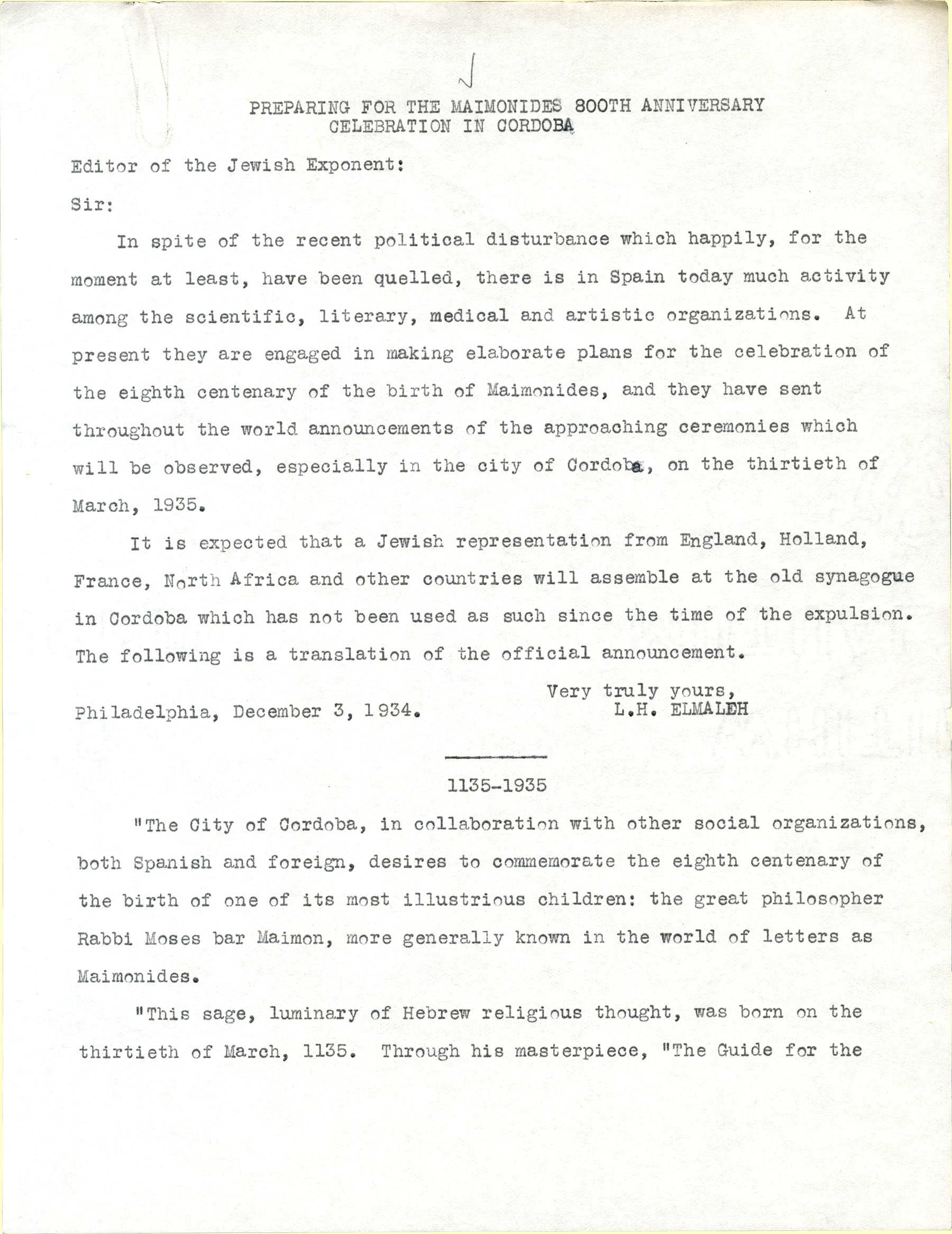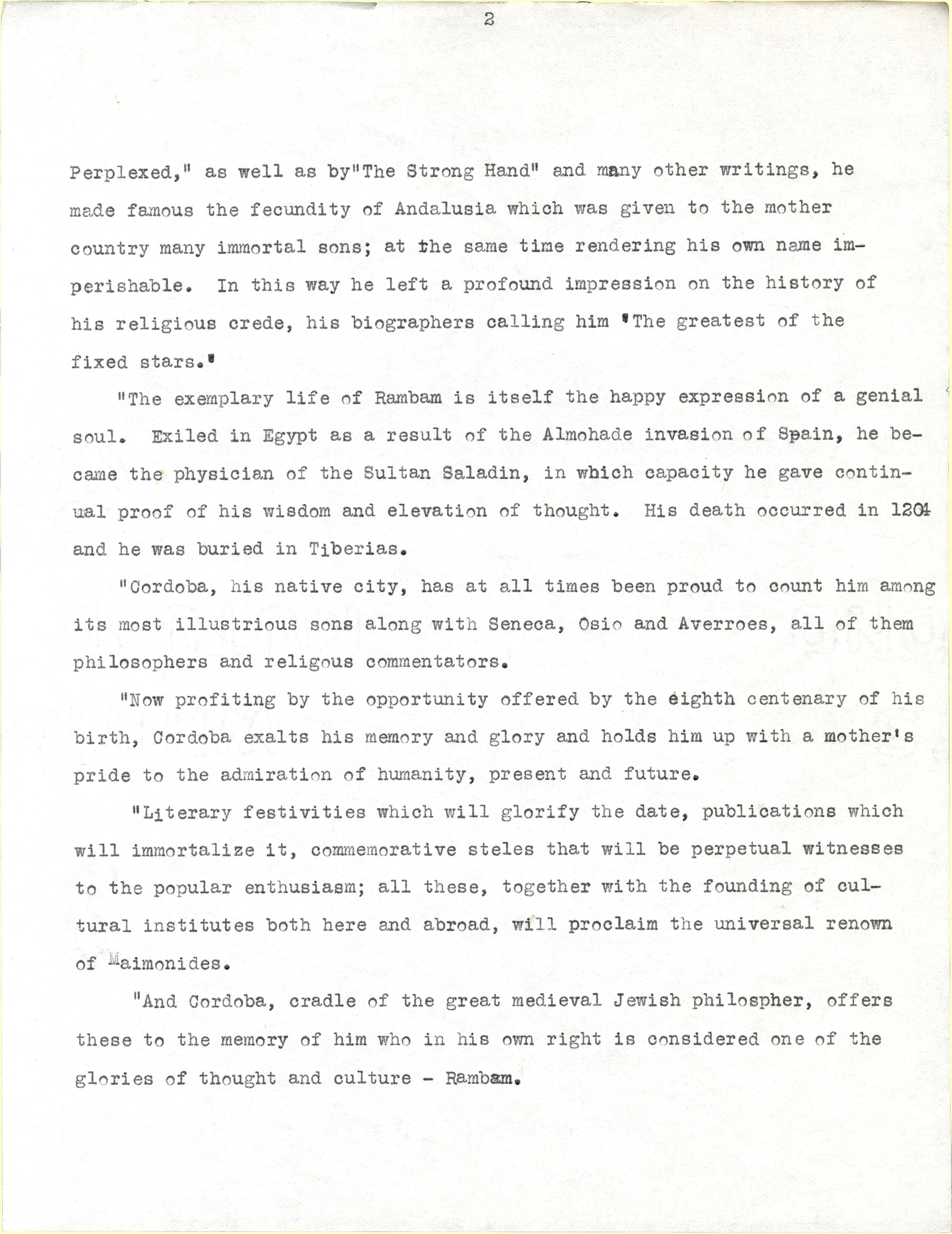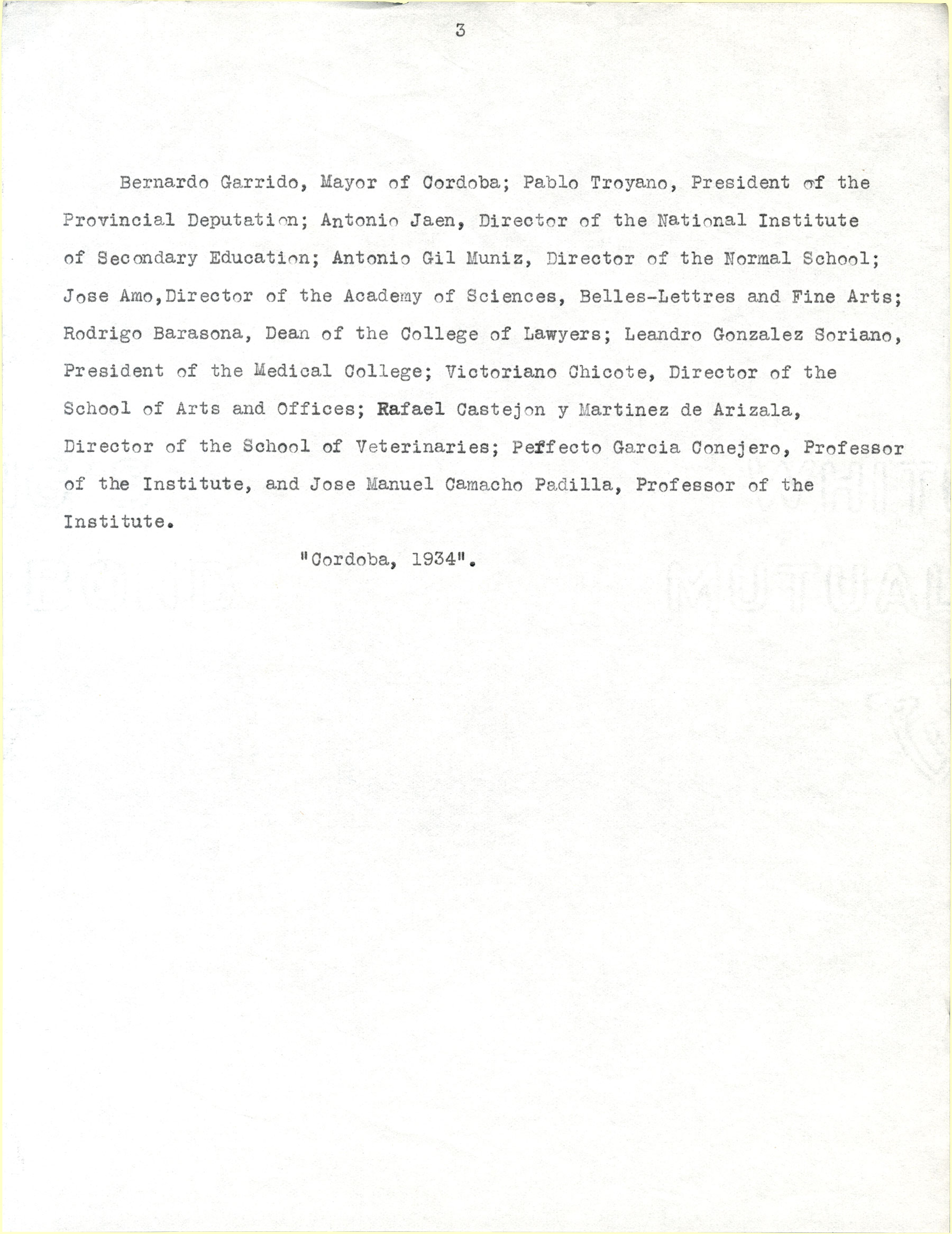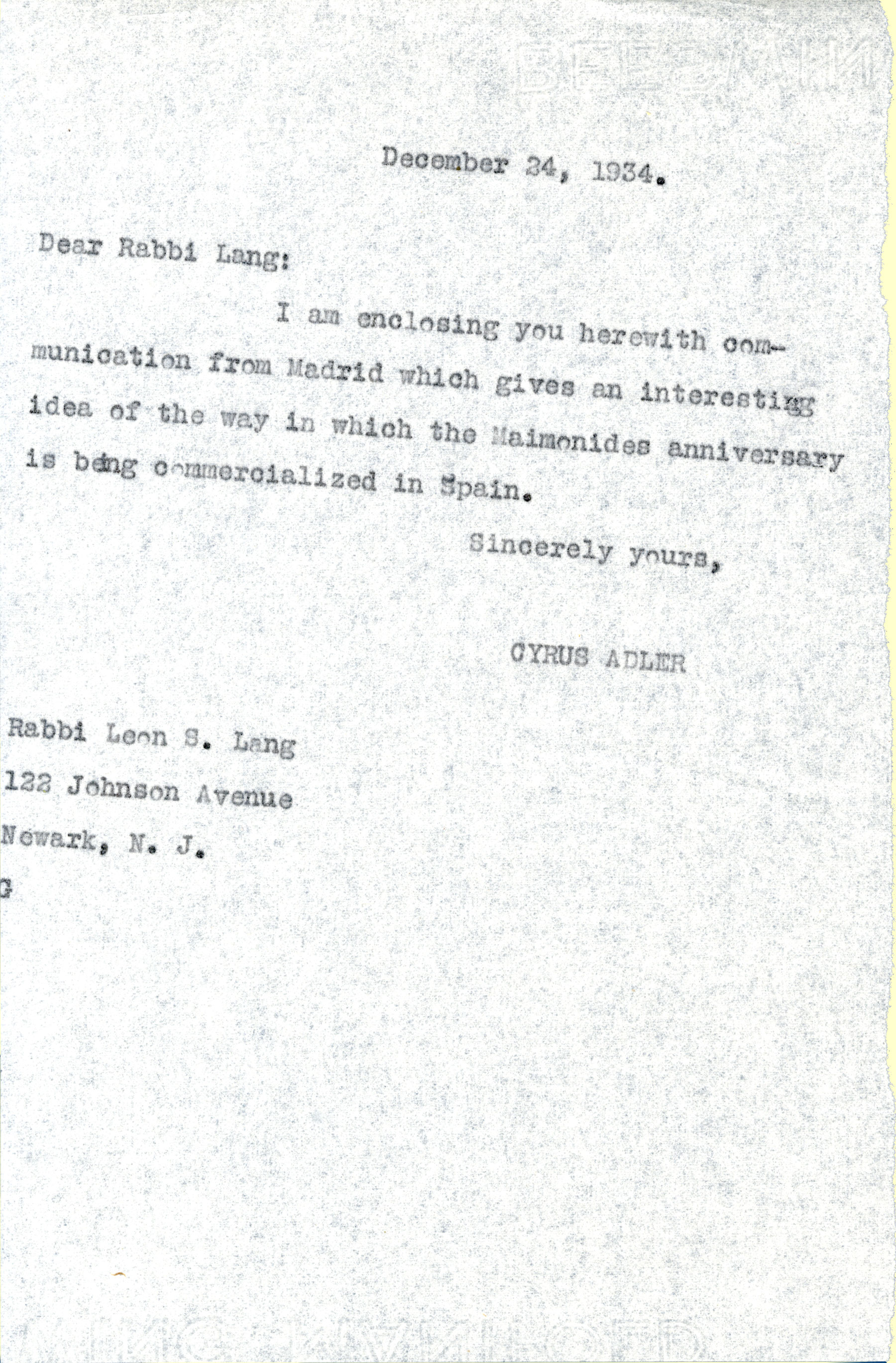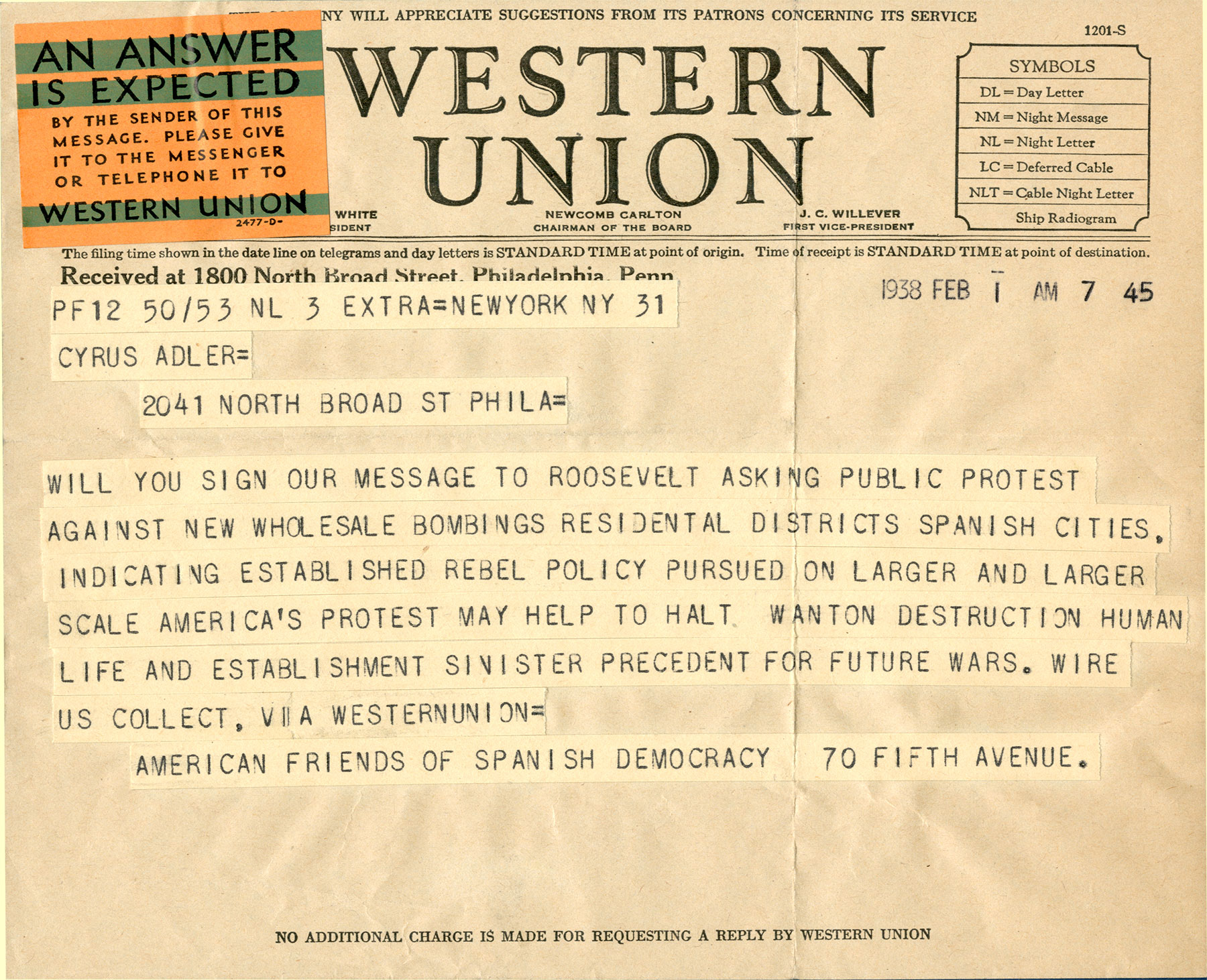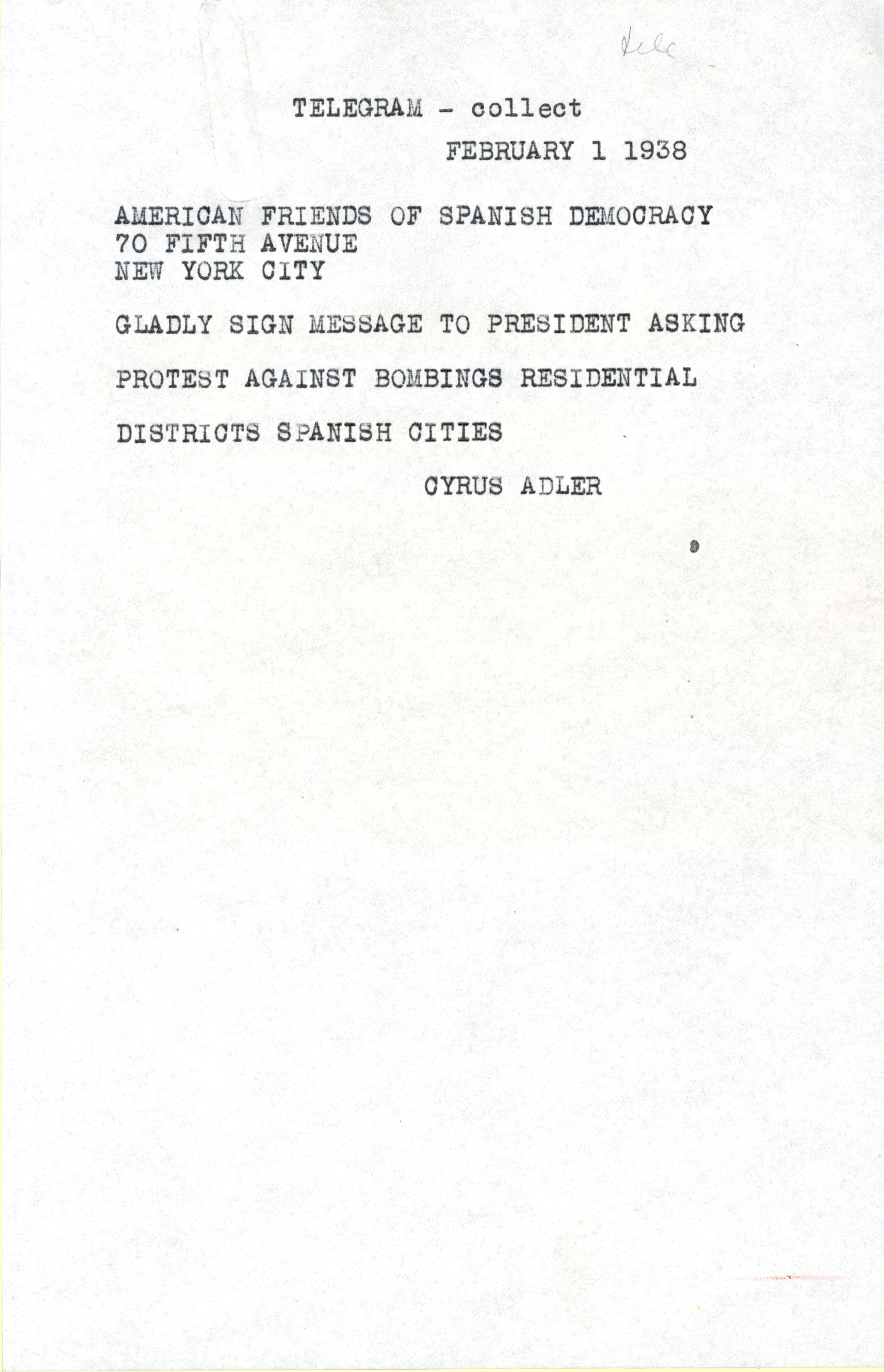In 1935, elaborate commemorative events took place throughout the world marking the octocentennial of the birth of Maimonides (Rabbi Moses bar Maimon 1135-1204), the medieval Jewish communal leader, philosopher, and physician. With Cyrus Adler at its helm, Dropsie College in Philadelphia took a leading role in the organization of the official commemorative events in the United States. In a letter, dated December 7th, 1934, found in the Adler papers at the Library at the Katz Center, we find Adler being made aware of the planning in Spain, particularly in Maimonides’ native city of Córdoba, for the upcoming celebrations in March of the coming year. The author of the letter, Leon H. Elmaleh, long-time cantor and lecturer at the Spanish and Portuguese Congregation Mikveh Israel in Philadelphia, sent Adler under separate cover what he originally wrote to the editor of the Philadelphia Jewish Exponent to inform its readers about the historic recognition by Spain of its ties to the Jewish sage of Córdoba. Elmaleh emphasized the significance of the events and the vitality of the scholarly and professional community in Spain, despite recent, albeit temporarily quelled, political turmoil. Well aware of Dropsie College’s long-standing commitment to Sephardic Studies, Elmaleh most likely forwarded his letter to Adler in the hope he would help disseminate news of the events and perhaps even send a representative to Spain, as Jewish leaders from other nations were planning on attending. Adler indeed immediately sent on the letter to Jewish leaders and sought advice about how to support the Spanish efforts.
Elmaleh’s letter to Adler also included an English translation of the August 1934 manifesto published by the Royal Academy of Sciences and Fine Arts of Córdoba, in collaboration with the City of Córdoba, and signed by the city’s highest political and academic officials, declaring their intention to commemorate the eighth centennial of the birth of the Cordoban native. The manifesto emphasizes local and regional pride, as it declared Maimonides as “one of its most illustrious sons.” The national government of the Spanish Republic which faced the twin threats of political disintegration and rising fascism soon followed suit by publishing an official decree (on December 8, 1934) signed by Prime Minister Alejandro Lerroux, declaring official government sponsorship of the public celebration to take place in Córdoba between March 25 and March 31 of 1935. The commemorative rites in Cordoba thus provided a context for redeeming and reclaiming the Spanish Republic through the re-envisioning of a tolerant transnational and diasporic Spanish patria, specifically through the reintegration of the memory of “Sepharad” and living Sephardim into its fold.
Dropsie College does not seem to have sent a representative to Spain in 1935 and the Republic fell and civil war broke out shortly after the commemoration. Spain nonetheless, came to the attention of Cyrus Adler once again in 1938: On February 1st he received an urgent telegram from “American Friends of Spanish Democracy” asking him to support their message to President Roosevelt supporting public protest against the bombing of residential districts in Spanish cities by the Nationalist rebel faction. In a demonstration of his resounding support for the Spanish Republic, Adler immediately responded by telegram that he would “gladly” sign the message. Adler’s support, as well as the fact that his signature was considered important for this cause (he was also approached by the Abraham Lincoln Brigades and the Social Worker´s Committee to aid Spanish Democracy for Child Welfare) indicates broad public awareness of Adler’s public advocacy on behalf of socially liberal causes, as well as the participation of Jewish leadership in the international fight against fascism. (Cyrus Adler collection “Spain”/Telegram – collect February 1 1938).
